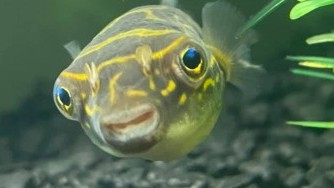Knobby Fancy Brittle Sea Star: Complete Care Guide
- Dec 12, 2021
- Anshika Mishra
- 260 0 0

In this article, we will be looking at the care requirements and eccentrics of the Knobby Fancy Brittle Sea Star. They are great to have in a tank, as they have a really fun personality. They are also popular as the Chain Stars.
Prices: You will normally spend about $24 to get one. The price also varies as per the size.
Tank Size: It doesn't matter, but you want to realize that they get huge. So, please do not put them in something too small; give them some room to swim around. Please do not put them in anything less than a 55-gallon tank.
Care Level: They are super easy to take care of. You don't have to do much other than get them into the tank safely. From then on, they are great scavengers running around the tank independently.
Temperament: They are semi-agressive. Some may be more aggressive for food, so you want to ensure that you are putting the right fish in your tank.
Reef Safe: It is reef safe if you put the right things in the tank. Bottom dwellers like Gobies are seen as snacks to this star as it gets older. They are also known to go after sails and Hermit Crabs as they run around on the sand. They will pick those off in the night.
So, before adding them into the tank, the creatures in the tank are safe from them.
Origin: They come from Indonesia.
Water Parameter
- Temperature: 72-78 F
- dKH: 8-12
- pH: 8.1-8.4
- Salinity: 1.020-1.025
Acclimation is a very important factor with any starfish in the hobby. They are extremely sensitive to water changes, especially from what they came in and what they are going into. So, a very slow drip acclimation is a must whenever acclimating them into your tank.
So, for example, if you acclimate your fish for one-hour, acclimate these stars for 4-hours. The longer is always better. This is because they do not need to be exposed to air during the acclimation process.
Appearance
Maximum Size: They can get up to 10-inches in size. Once they get this big, they see larger meals as their food. So, you want to be careful.
Colors: Most of the time, you will find this star in brown, black, orange, and the red base color. They are very pretty, and the little knobs all over their tentacles are enticing to look at.
Diet
They are a carnivore. Spot feeding is also something you can do for these. While they are nocturnal scavengers, they will be looking for food throughout the night. So, they are fine, but you can also spot feed them to make sure they have enough in their system.
When you offer them food, you will notice their tentacles start to come out crazily adn shake around the tank as you feed your other fish. But, of course, that's just him trying to catch some of that food for himself.
You can also feed them frozen shrimp from the grocery store. Cut them into little pieces adn put them down there where he tends to stick his tentacles out, and he will wrap his arm around those and bring it to his mouth.
Compatibility
You can have multiple of these stars in the tank, and you can also have different types of sea stars in the tank. But, they do know that they will compete for food if not enough is supplied to them. So, they can see each other as meals if they are not eating enough or scavenging for enough food. So, be careful whenever you are actually mixing them.
They eat detritus and smaller organisms like cleaner shrimps, hermits, and small bottom-dwellers.
Dosing
Make sure you don't have any copper dosing in the tank. If you have an ick outbreak with your fish, you want it out of the tank before you dose anything because they will not survive it. Sudden spikes in the water, specifically your salinity or your nitrates, this star will be the first one to be suffering because they are too sensitive and they can't handle it.
Toxic
They release toxic mucus from their bodies. This is what they use to paralyze their prey and eat. So, whenever you are handling it, they can remove these. So, make sure that you go and wash your hands thoroughly before touching your mouth or eyes once you are done holding them.
In a typical tank, you want to have a lot of live rocks, good sandy bottom, and a lot of caves for them to hide in. So they usually come out in the night times.






About author